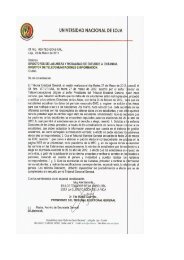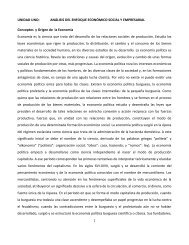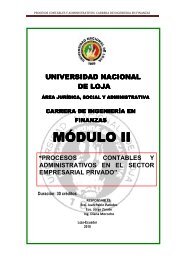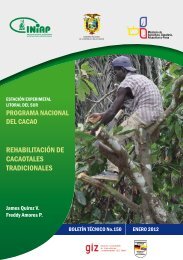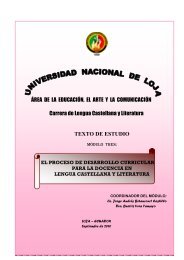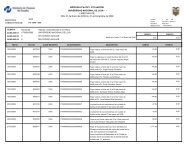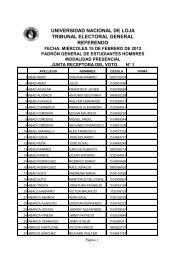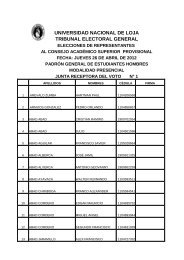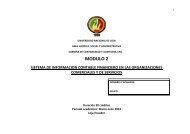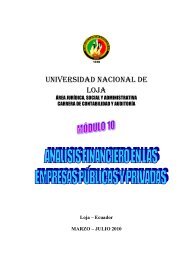module 5 planning of the english language teaching-learning process
module 5 planning of the english language teaching-learning process
module 5 planning of the english language teaching-learning process
Create successful ePaper yourself
Turn your PDF publications into a flip-book with our unique Google optimized e-Paper software.
UNIVERSIDAD NACIONAL DE LOJA<br />
Área de la Educación el Arte y la Comunicación<br />
English Language Career<br />
Characteristics and techniques<br />
1. Word flash cards are easy and inexpensive for <strong>the</strong> teacher to prepare<br />
2. The cards are easy lo store and to carry to <strong>the</strong> classroom.<br />
3. They are easy for <strong>the</strong> teacher and <strong>the</strong> student's to handle and to use at <strong>the</strong><br />
appropriate moment They can be head, propped, or stuck to <strong>the</strong> board A<br />
number <strong>of</strong> cards can be displayed al <strong>the</strong> same time: by asking several students<br />
to hold <strong>the</strong>m, by stitching <strong>the</strong>m to <strong>the</strong> board, by clipping <strong>the</strong>m to a wire (see<br />
technical tips page 118), by propping <strong>the</strong>m on a shelf, by using a sentence<br />
maker. (See technical tips page 64.)<br />
Presentation<br />
Characteristic and techniques <strong>the</strong> cards can be prepared by <strong>the</strong> teacher and or<br />
students and may be handled and <strong>the</strong> stuck on different surfaces with adhesive plastic,<br />
sticky tape, pins, etc.<br />
Labelling classroom objects<br />
A well-established way <strong>of</strong> using word cards is for <strong>the</strong> teacher to stick <strong>the</strong>m on objects in<br />
<strong>the</strong> classroom: <strong>the</strong> door, <strong>the</strong> cupboard, a window, a desk, etc. The intention is to<br />
familiarize <strong>the</strong> student with <strong>the</strong> written form <strong>of</strong> <strong>the</strong> word.<br />
At <strong>the</strong> reading practice stage, a game could be played based on true/false in which <strong>the</strong><br />
teacher moves <strong>the</strong> cards around before <strong>the</strong> students come into <strong>the</strong> classroom. The<br />
students must spot which words are in <strong>the</strong> wrong place and move <strong>the</strong>m lo <strong>the</strong> correct<br />
place.<br />
Characteristics and techniques: strips <strong>of</strong> card or paper are easy and cheap to obtain<br />
and texts can readily be written on <strong>the</strong>m with markers.<br />
Dialogue sentence cards<br />
Cards can be made <strong>of</strong> <strong>the</strong> sentences, which have become familiar to <strong>the</strong> students in a<br />
short dialogue or in a story. These sentences can be shown as <strong>the</strong> dialogue is being<br />
spoken and <strong>the</strong>n stuck on <strong>the</strong> board or held by students. This stage <strong>of</strong> recognition<br />
reading is modest to what it <strong>of</strong>fers.<br />
[Escribir texto] Página 133



